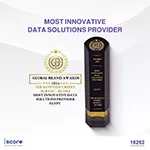Technology
RFID: An Essential for Businesses

Anyone who’s involved in tech knows how fast-evolving landscape it is, with advances made each month is hard to keep track of everything but when it comes to B2B changes, like RFID labels, many of them do such an improvement that it echos across mainstream media as well as other industries.
Chances are that you’ve likely heard about RFID. It’s a technology that’s quietly revolutionizing various industries, offering unprecedented efficiency and accuracy. In this guide, we’ll learn what is rfid labels, how it works, and why it’s becoming indispensable in multiple fields.
What is RFID?
The first thing to know is that RFID stands for Radio Frequency Identification, and it basically is a wireless technology that uses electromagnetic fields to transfer data. It has a small radio transponder that’s called a tag, a receiver, and a transmitter.
Its uses vary a lot, but it’s primarily used to identify and track tags attached to objects. But they can serve a lot of different purposes, like sensing temperature or moisture, some come with LEDs to easily identify them across large inventories.
The adaptation and installation are easy and are usually done by specialized companies like Brady. You can also ask for custom RFID labels.
How RFID Works
When an RFID tag is triggered by an electromagnetic pulse from an RFID reader that’s close the tag transmits back data as a response, which is usually related to inventory.
So, at its core, RFID technology involves two basic steps:
- A reader device sends out a signal which is received by an RFID tag.
- The tag then transmits data back to the reader, providing information about the object to which it’s attached.
Components of RFID Systems
Once you learn how it works the components of the whole system become obvious, you need a couple of devices, one that receives, another that sends the data, an antenna to keep the connection, and software that wraps up everything.
Here are the basic components of a system:
RFID Tags
The tags are the small devices that you will be putting in an inventory object, it will give a digital identity to any asset.
These are small devices that store data about the object or asset they are attached to. They can come in various forms, including stickers, cards, and embedded chips.
There are a couple of different tags, you can find some that sense temperature as well as moisture and other that have dual frequency and labels with LEDs.
RFID Readers
The readers are the ones in charge of communicating with the tags, they receive, store, and show the data. Readers also come in different presentations depending on what are you looking for, they can be handheld or fixed installations.
Some companies have complex systems that include both installations.
RFID Software
The software is what wraps up the whole system. It will process all the data collected by the readers and show it in a user-friendly and readable way.
It will help users make sense of the information and integrate it into existing systems.
Types of RFID Tags
In most systems, you can find an array of different types of RFID tags. Each of them serves a different purpose and offers its unique advantages and disadvantages.
That’s why it’s advisable to hire a specialized company like Brady to do the installation, they can help you choose the right tags for your needs and come up with a unique system without issues.
Here are the different types of tags:
Passive RFID Tags
These tags do not have their own power source. Instead, they are powered by the electromagnetic energy transmitted from the RFID reader.
They are cost-effective and suitable for many applications.
Active RFID Tags
Active tags have their own power source, which allows them to transmit signals over longer distances and prolonged periods of time.
They are ideal for tracking high-value or large-scale assets.
Semi-Passive RFID Tags
Also known as battery-assisted passive (BAP) tags, these use a battery to power the tag’s circuitry but rely on the RFID reader’s electromagnetic energy for communication.
They offer a balance between cost and performance.
Advantages of RFID Technology
Since it’s an advancement from previous methods of inventory keeping it’s clear that the RFID tech has more pros than cons. It will make any B2B or company life better, more efficient, faster, and more organized.
Here are the advantages:
Enhanced Efficiency
RFID technology automates data collection processes, significantly reducing the time and labor required for inventory management, asset tracking, and other tasks.
You won’t need to manually count, or sum your inventory each time it moves.
Improved Accuracy
Manual data entry is prone to errors, due to the human factor but RFID provides a more reliable data collection since you will be removing that human factor, that way the accuracy of the information recorded is a lot better.
Real-Time Data Access
With an RFID system, the data can be captured in real time, giving you up-to-date information that is crucial for decision-making and operational efficiency.




















































